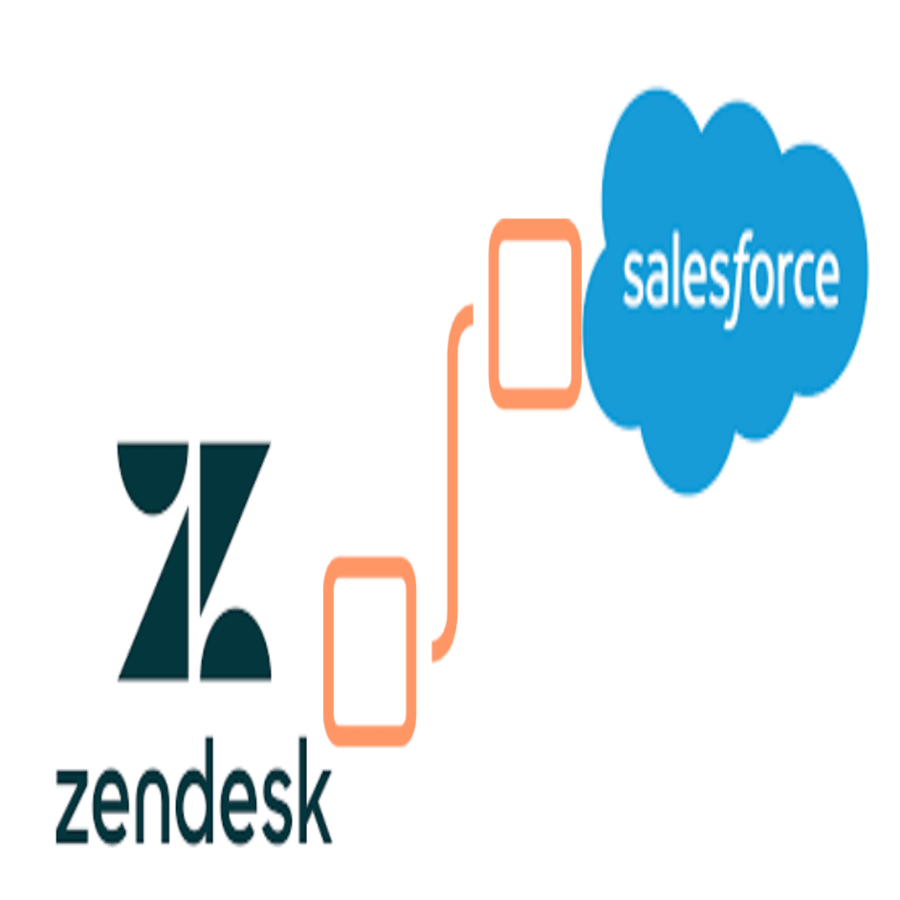
INTRODUCTION
Salesforce CRM is a leading customer relationship management platform trusted by businesses worldwide. With its comprehensive suite of features and cloud-based infrastructure, Salesforce CRM empowers organizations to effectively manage customer interactions, drive sales, and deliver exceptional customer experiences.
Zendesk support is a well-known ticketing system specifically designed for tracking, prioritizing, and solving customer support interactions. Zendesk for Salesforce integration is the first of the many valuable and beneficial integrations by which businesses can accomplish most of their sales-related goals seamlessly.
Customer support & CRM is one of the most powerful combinations that bring sales conversions, improving customer satisfaction, and an amazing experience. One of the rock-solid examples of this powerful combination is Zendesk integration with Salesforce.
So question is how can we unlock this power of integration if we have Salesforce CRM and Zendesk Ticketing System. Let’s explore this further.
BENEFITS OF ZENDESK & SALESFORCE INTEGRATION
1. Unified Customer View:
The integration should provide a consolidated view of customer data, including support tickets, interactions, and contact information from both Zendesk and Salesforce. This unified view enables agents and sales representatives to have a comprehensive understanding of the customer’s journey.
2. Ticket Synchronization:
It is crucial to synchronize support tickets between Zendesk & Salesforce. This allows customer support agents to create, update, and resolve tickets in Zendesk while ensuring that relevant information is synchronized with Salesforce for sales and reporting purposes. Likewise It helps Sales & Customer Success to measure the customer satisfaction and interest.
3. Contact and Account Sync:
The integration should enable the synchronization of contacts and accounts between Zendesk and Salesforce. When a customer’s contact details are updated in either system, the changes should be reflected in the other system to maintain accurate and consistent information.
4. Case Escalation and Handoff:
The integration should support seamless case escalation and handoff between Zendesk and Salesforce. For example, if a support ticket requires sales involvement, it should be easily transferred to the appropriate sales representative in Salesforce, ensuring a smooth transition and collaboration.
5. Unified Reporting & Analytics:
Integration should facilitate the exchange of data for reporting and analytics purposes. This includes capturing key metrics, such as ticket volume, response times, customer satisfaction ratings, and sales performance, in both Zendesk and Salesforce to provide insights into customer service effectiveness and sales outcomes.
6. Workflow Automation:
Integration should allow for workflow automation between Zendesk and Salesforce. For instance, specific triggers or actions in one system can automatically trigger actions or updates in the other system, saving time and ensuring consistent processes.
7. Customization and Flexibility:
The integration should provide flexibility to accommodate unique business requirements and workflows. This includes the ability to customize data mappings, field mappings, and synchronization rules to align with specific business needs.
8. Security and Data Privacy:
Robust security measures should be in place to ensure the confidentiality and integrity of customer data exchanged between Zendesk and Salesforce. Compliance with data protection regulations, such as GDPR or CCPA, should be considered.
Limitation of Integration
1. Customization Complexity: Advanced customization requirements may present challenges in the integration setup. Configuring complex data mappings, field mappings, or synchronization rules may require technical expertise and additional effort.
2. Data Synchronization Frequency: Depending on the integration setup, there may be limitations on the frequency of data synchronization between Zendesk and Salesforce. Real-time synchronization may not be possible in all cases, and there might be delays in data updates between the two systems.
3. Limited Data Visibility: The integration typically focuses on syncing specific data fields or objects between Zendesk and Salesforce. This means that not all data in one system may be visible or accessible in the other, which can impact reporting and analytics capabilities.
4. Feature Parity: Zendesk and Salesforce have different features and functionalities. Some features available in Zendesk may not have direct equivalents or integrations in Salesforce, and vice versa. It’s important to assess the feature parity and understand the impact on your business processes.
5. Cost Considerations – Duplicate Licenses: Integration between Zendesk and Salesforce may incur additional costs, such as licensing fees for connectors or third-party integration tools. It’s essential to evaluate the financial implications and ensure it aligns with your budget and expected return on investment.
6. Technical Dependencies: The integration relies on the compatibility and reliability of both Zendesk and Salesforce platforms. Any changes or updates to either system may require adjustments or updates to the integration, potentially causing temporary disruptions.
Conclusion
It’s crucial to thoroughly review the documentation, consult with the integration providers, and conduct a comprehensive assessment of your organization’s requirements and limitations before implementing the Zendesk-Salesforce integration.
Connect with us; we are a leading Salesforce Integration Services provider with hands-on expertise in Salesforce solutions; We have a dedicated team of Salesforce consultants and developers that will help you with the best solutions at every stage of Zendesk integration with Salesforce.
